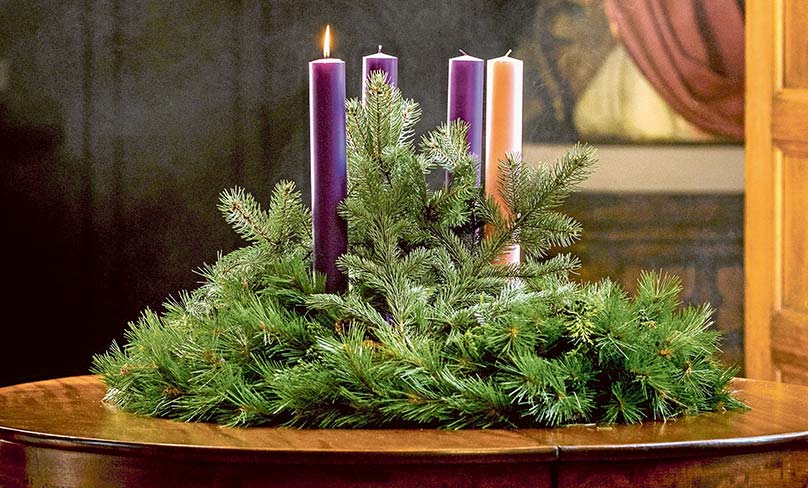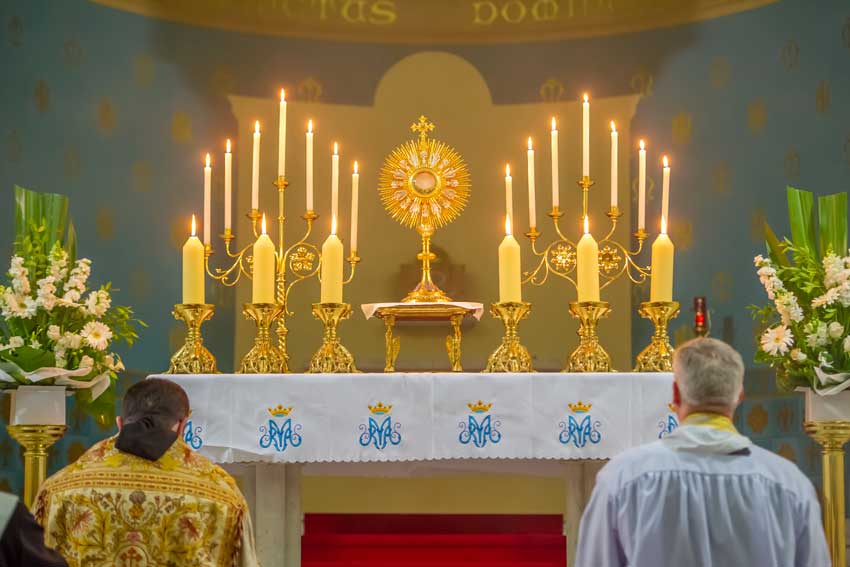
“Dear Father, I was talking recently with a Maronite Catholic about how his Eastern Rite celebrates Advent and was surprised to learn how much penance they do. Is this something common to other Eastern rites?”
Let me begin by recalling what I wrote last year about the history of Advent as a season of penance in the Latin rite and in the Orthodox tradition.
In the Latin rite, from the beginning, penance was part of the preparation for Christmas. Late in the fifth century Bishop Perpetuus of Tours issued a regulation that there should be three days of fasting each week from the feast of St Martin of Tours (November 11) to Christmas.
The practice of living a season of penance before Christmas soon spread throughout France, Spain and later Germany. The fast started on different days, among them September 24, November 1, 11 or 14, and December 1.
The law of fast was never as strict as that of Lent and it varied considerably from place to place, both in content and in duration. In most places people were to fast three days a week and to abstain from certain foods.
As regards abstinence, Bishop Burchard of Worms in 1025 ordered abstinence from wine, ale, honey-beer, meat, fat, cheese and fat fish. In addition, people were to abstain from weddings, amusements, travel for pleasure and even, on days of fasting, from conjugal relations.
In later centuries papal indults gradually reduced the obligation of fasting to two days a week. The Code of Canon Law of 1917 did away with the requirement of fasting except for the fasts of Ember week and Christmas Eve.
In the Orthodox tradition, ever since the eighth century Advent has been lived as a period of fasting extending from November 15 to Christmas. It is known as St Philip’s Fast since it begins on the day after the feast of St Philip, November 14 in the Orthodox calendar.
Different Eastern Churches have different lengths of fasting and many of them celebrate the birth of Christ on the feast of Epiphany.

This early tradition of Advent as a season of penance and particularly of fasting has been observed up to our own day in the Eastern rites of the Catholic Church. Catholic Churches of the Byzantine Rite, among them the Ukrainian, Melkite and Romanian, follow most closely the Orthodox Advent observance.
Like the Orthodox, they begin on the day after the feast of St Philip on November 14 and so call it St Philip’s Fast. The Melkite Catholic Church begins the fast on December 10.
While the exact way of living it varies from one rite to another, the fast generally lasts for forty days. During this time the faithful abstain from such foods as meat, fish, dairy or other animal products and wine or oil on Mondays, Wednesdays and Fridays. They live a lesser abstinence from meat, fish and dairy or animal products on Tuesdays and Thursdays.
They are allowed to eat fish on Saturdays and Sundays, but they abstain from all other animal products. Christmas Eve, December 24, is generally lived as a day of strict fast in which no solid food is eaten until evening. Although this Advent fast is very strict, it is somewhat less rigorous than that of Lent.
For the Maronites, about whom you asked, the days and manner of fasting in Advent can vary from place to place and from person to person.
Advent for the Maronites begins on the sixth Sunday before Christmas. Fasting usually consists in not eating anything from midnight until noon.
Abstinence consists of abstaining from all animal products, usually meat, but in some cases also from dairy, eggs, fish, sea products and alcohol.
In the early centuries the Advent Maronite fast began on November 15 and ended on December 24, Christmas Eve. Over the centuries various synods reduced the length of the fast so that it began variously on December 5 and December 13.
In general, all the Eastern Catholic rites observe a period of penance in Advent. While this is not required in the Latin rite, we would do well to choose some particular penance to do in Advent as a way of detaching ourselves from the world and its comforts and of cleaning out the stable of our soul so that Christ finds a warm welcome there at Christmas.
